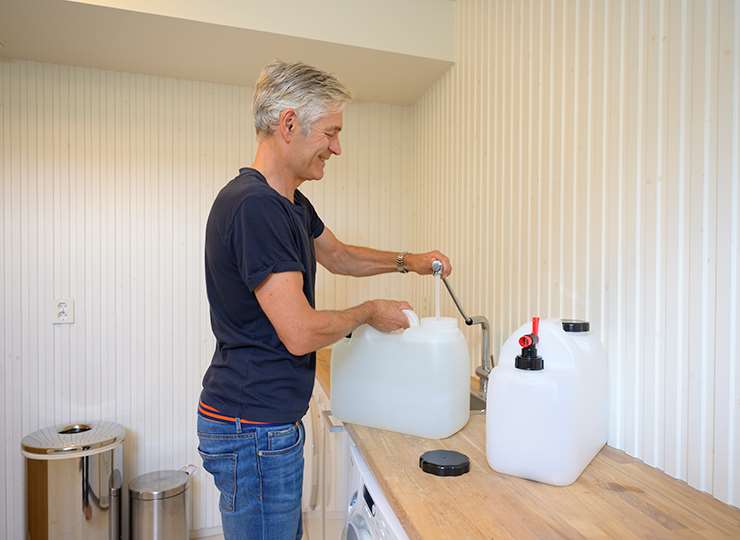
Emergency water
We recommend storing around 20 litres of drinking water per person. You will then cover the minimum needs for one week if anything should happen to the tap water supply.
Advice about water
- You can fill water from the tap into water containers or bottles.
- You can also buy containers or bottles of water from a store.
- Pure water in clean containers can be stored for many years without becoming hazardous to drink.
You need water for drinking, food preparation and hygiene. Some fluid requirements can be covered by juice, soft drinks and other alcohol-free drinks. Here is how to ensure water for your household:
Fill water in containers
You can fill water from the tap into water containers or bottles. Here is a simple method of how to store water for many years.
Store-bought water
You can also purchase water and store it. Store-bought water does have a best-before date; however, this is mostly so that the manufacturer can guarantee the contents ‘as produced’. Water can eventually acquire a stale taste because the bottle is not completely sealed - and the plastic can give a taste to the water - however, this does not mean that the water is harmful to health.
Difficult to find storage space for water?
It can be easier to find space for several small water containers rather than a few large ones. Another tip is to place small water containers in the freezer. Containers placed in a freezer must not be filled completely, otherwise they will burst.
If you live in a building with common areas you can enquire with the building committee or housing association about the possibility of having a common storage space for water.
Uncertain about water quality?
The safest way is to store pure drinking water. What you need to do if you have to find water from sources where you are uncertain about the quality:
- Filter the water to eliminate any particles and sediment, e.g. by using a strainer.
- The next step is to boil the water. The water must boil hard to eliminate microorganisms such as viruses, bacteria and parasites.
- Allow the water to cool naturally without adding ice cubes or similar.
There are products available that purify water. Coffee makers do not boil the water - the water must therefore be pre-boiled.
NB! Do not drink any water where there is the slightest doubt that it may be contaminated by anything that is not removed by boiling. This may be, for example, chemical contamination.

